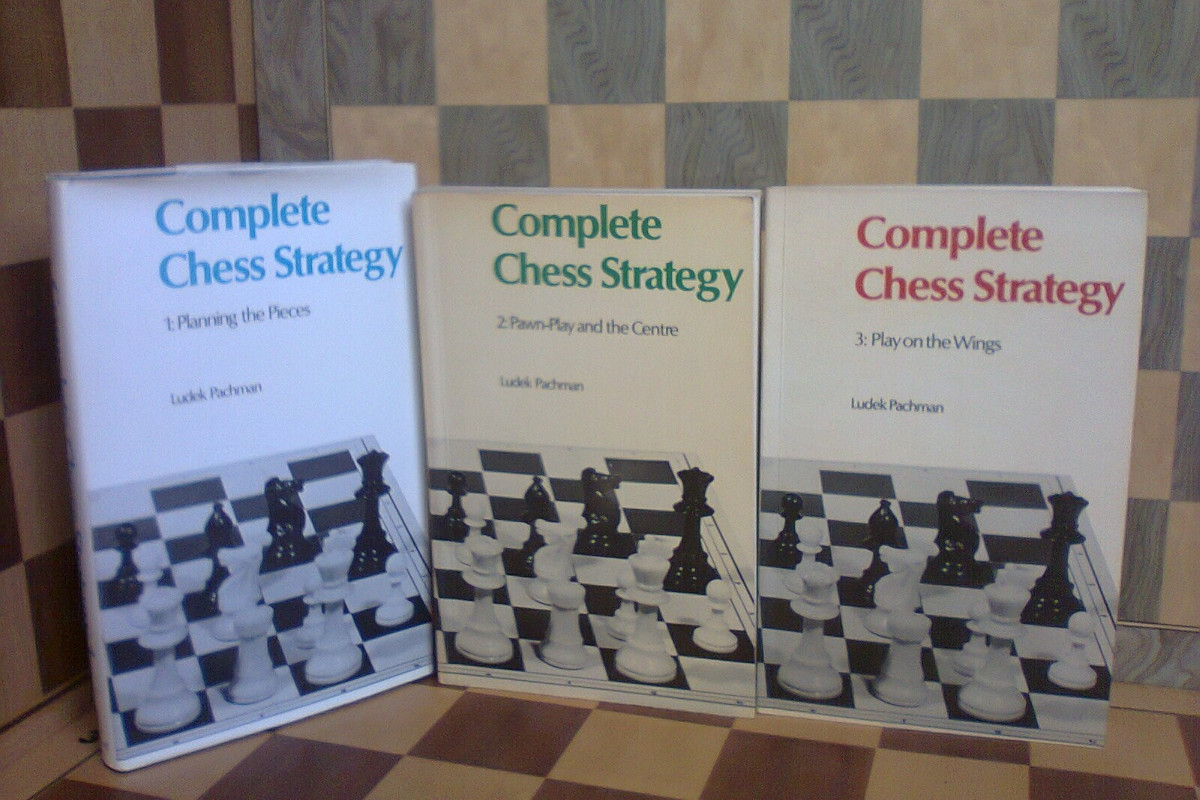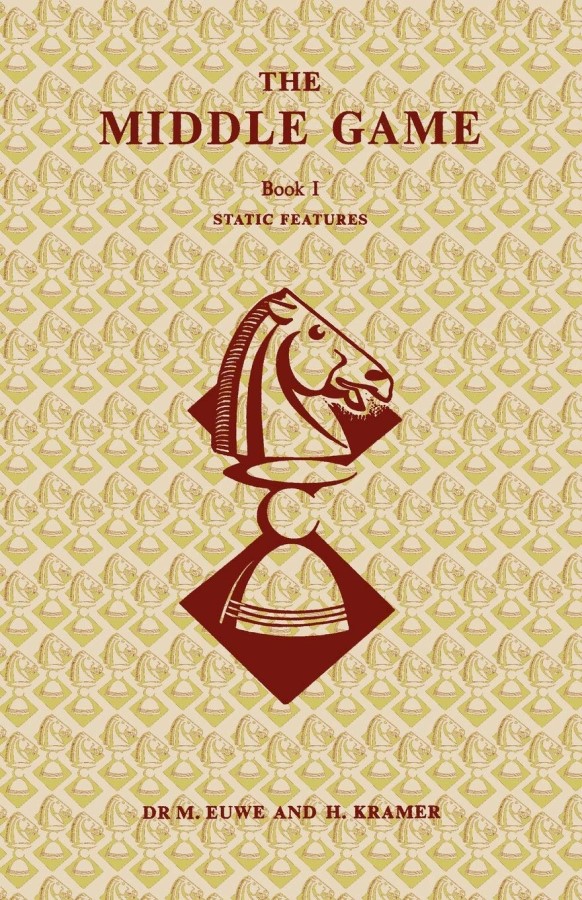


[Note that Jon Speelman also looks at the content of the article in video format, here embedded at the end of the article.]
 Recently, I’ve been looking at some of my old middlegame books, both as potential teaching material and for the pleasure of reminding myself what the bods had to say.
Recently, I’ve been looking at some of my old middlegame books, both as potential teaching material and for the pleasure of reminding myself what the bods had to say.
I’ve got a shelf with the Informator’s Encyclopaedia of Middlegames on the left-hand side (not only full of examples, but a nice big book to anchor the rest). And next to it are Max Euwe and Hans Kramer’s two-volume work on the middlegame — a childhood favourite which I had on the shelf behind my bed; three volumes of Complete Chess Strategy by Ludek Pachman; A Contemporary Approach to the Middlegame by Alexei Suetin; three different editions of Aron Nimzowitch’s My System (one in Russian) next to his Chess Praxis and many more.
I browsed through some bits of these today. I’m pretty lax in my reading of chess books nowadays, looking mainly at the pictures (or diagrams, to use the technical term) rather than toiling through many variations. But this does reinforce pattern recognition, which is the key to how we humans play chess.
We start with the very first game in volume two (Dynamic Features) of Euwe and Kramer, which is a famous win by Emanuel Lasker in which he bamboozled the fiercely logical Siegbert Tarrasch. I found it in MegaBase with the same notes by Garry Kasparov both in English and German and have kept his first two to set the tone and, of course, his variations.
I particularly like the chapters on Atttacking the King in Euwe and Kramer with the little subsections: Explosion on KR7, Explosion on KN7, Explosion on KB7 etc, and have lifted a couple of examples from there.
From Volume 1 of Pachman’s trilogy, I’ve taken a famous win by Mikhail Botvinnik against Max Euwe in which the Patriarch demonstrated the power of the two bishops even at the cost of a pawn sacrifice — a lesson which Magnus Carlsen is far from deaf to in his games.
Published in East Germany in 1971, Suetin’s book was presumably originally written in Russian and translated into English from the German by Les Blackstock for BT Batsford in 1976. It must have been a nightmare to translate! He has retained the flavour of the (possibly) endearing Soviet attempt to impose order on the complexities of the middlegame with fusillades of worthily wordy theory. For all that, there’s plenty of excellent chess, and I’ve taken a couple of examples from his chapter on the initiative (I was going to use a famous game Grunfeld v Alekhine, but when I looked in MegaBase it was another one annotated by Garry Kaspaov and that seemed a plagiaristic effort too far). He’s also got lots of combinations, and I’ve added one of these.
I’ll be back in a fortnight on October 1st.
Select an entry from the list to switch between games
| Advertising |